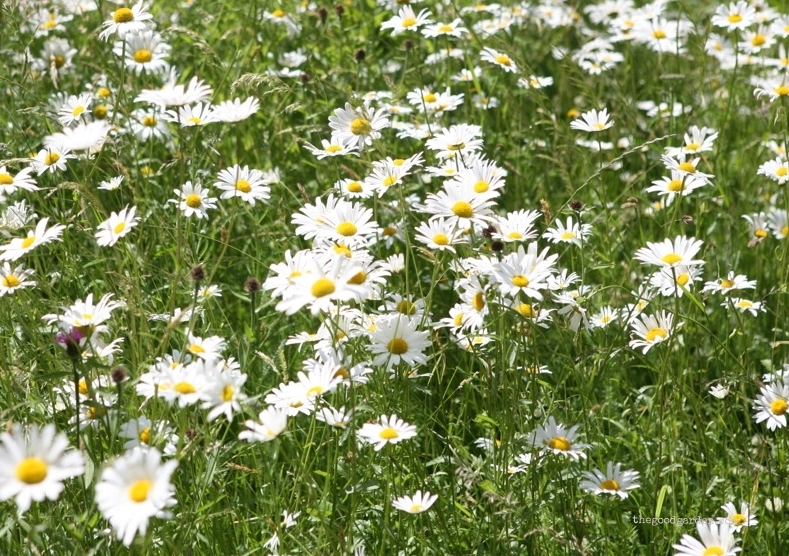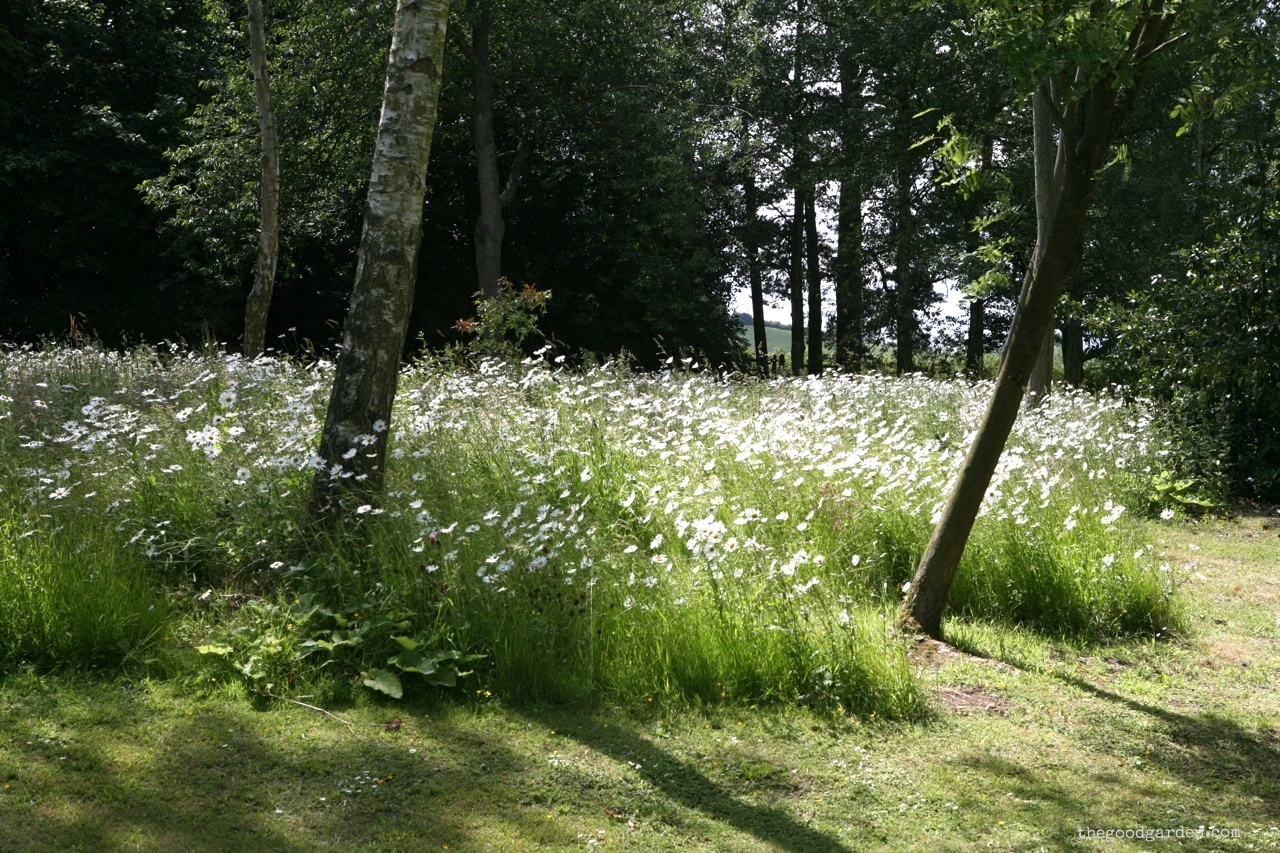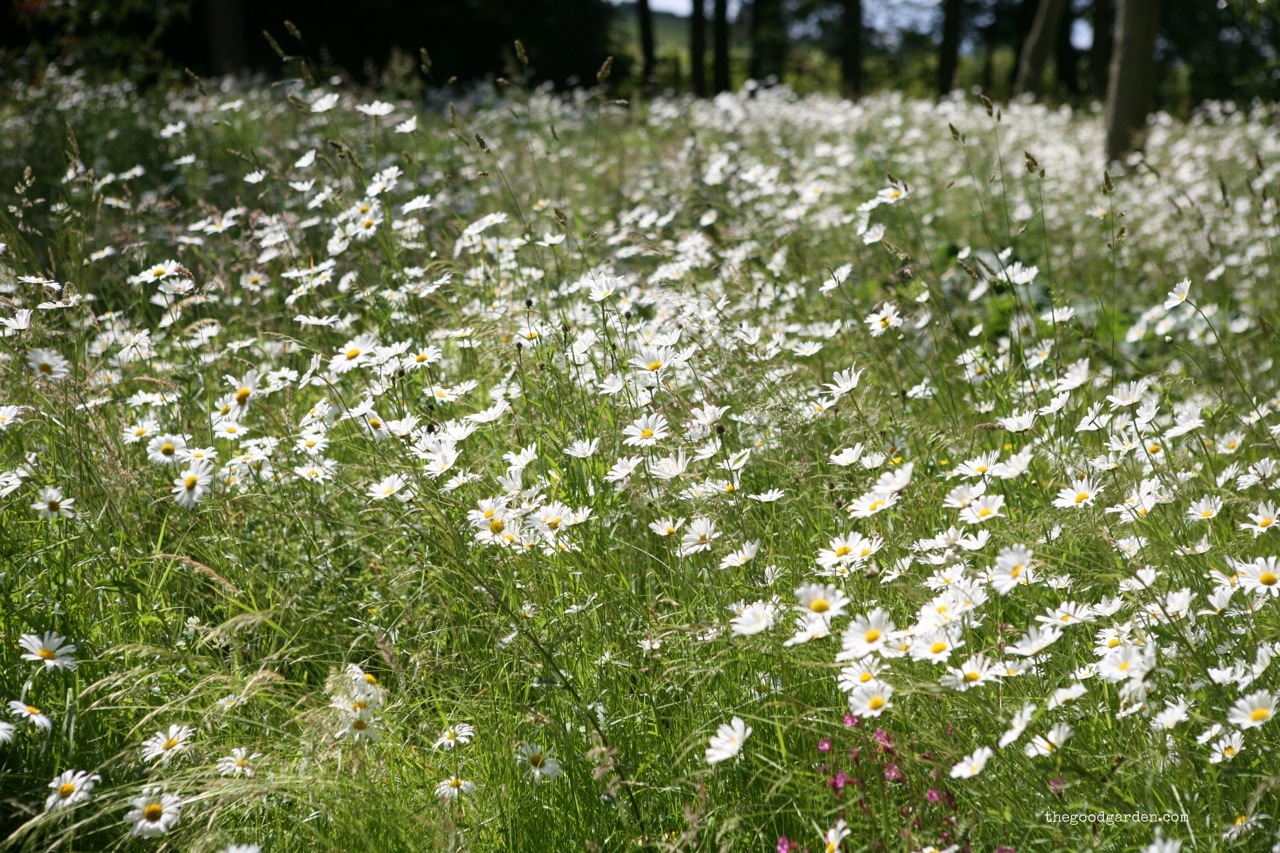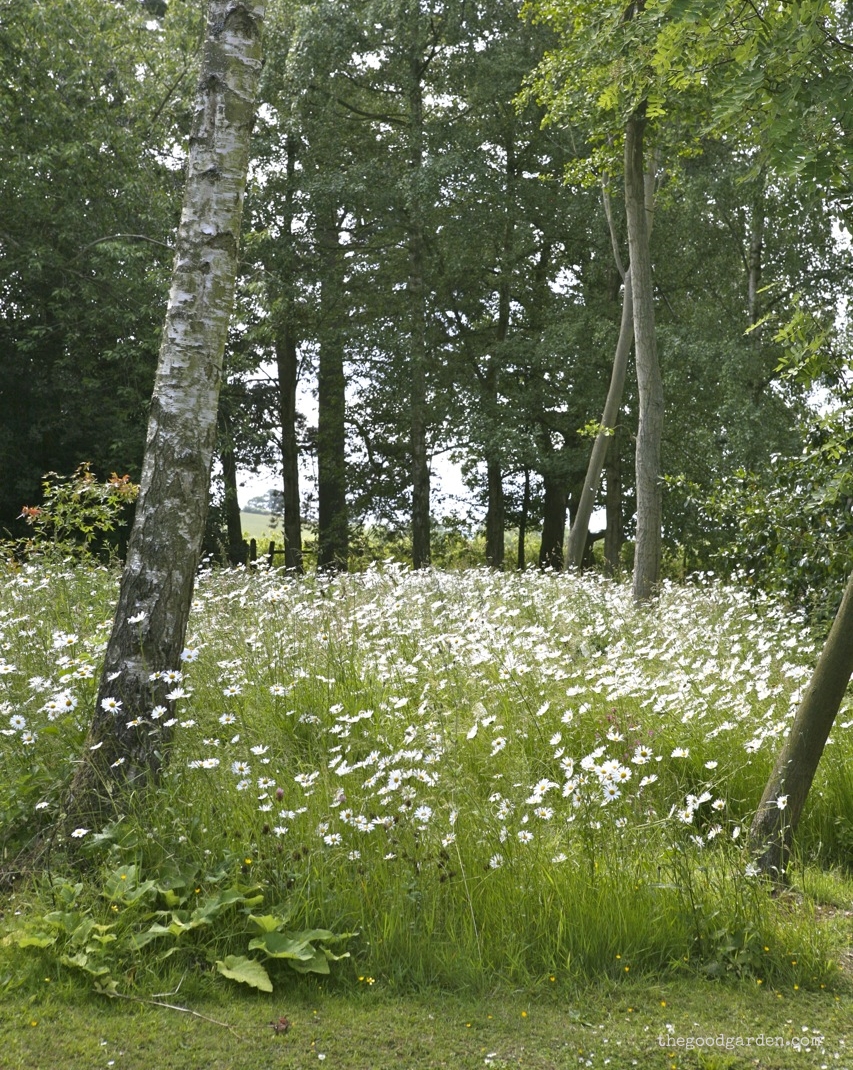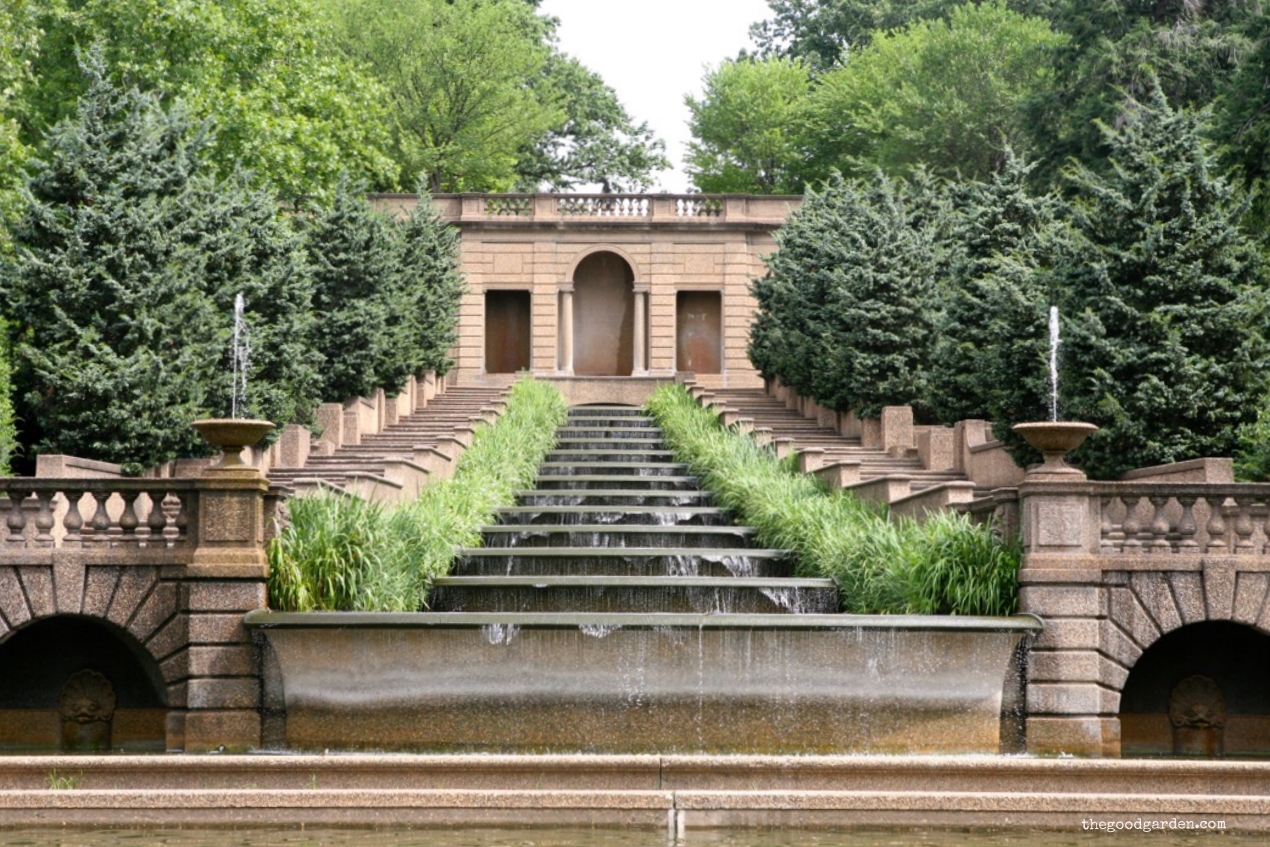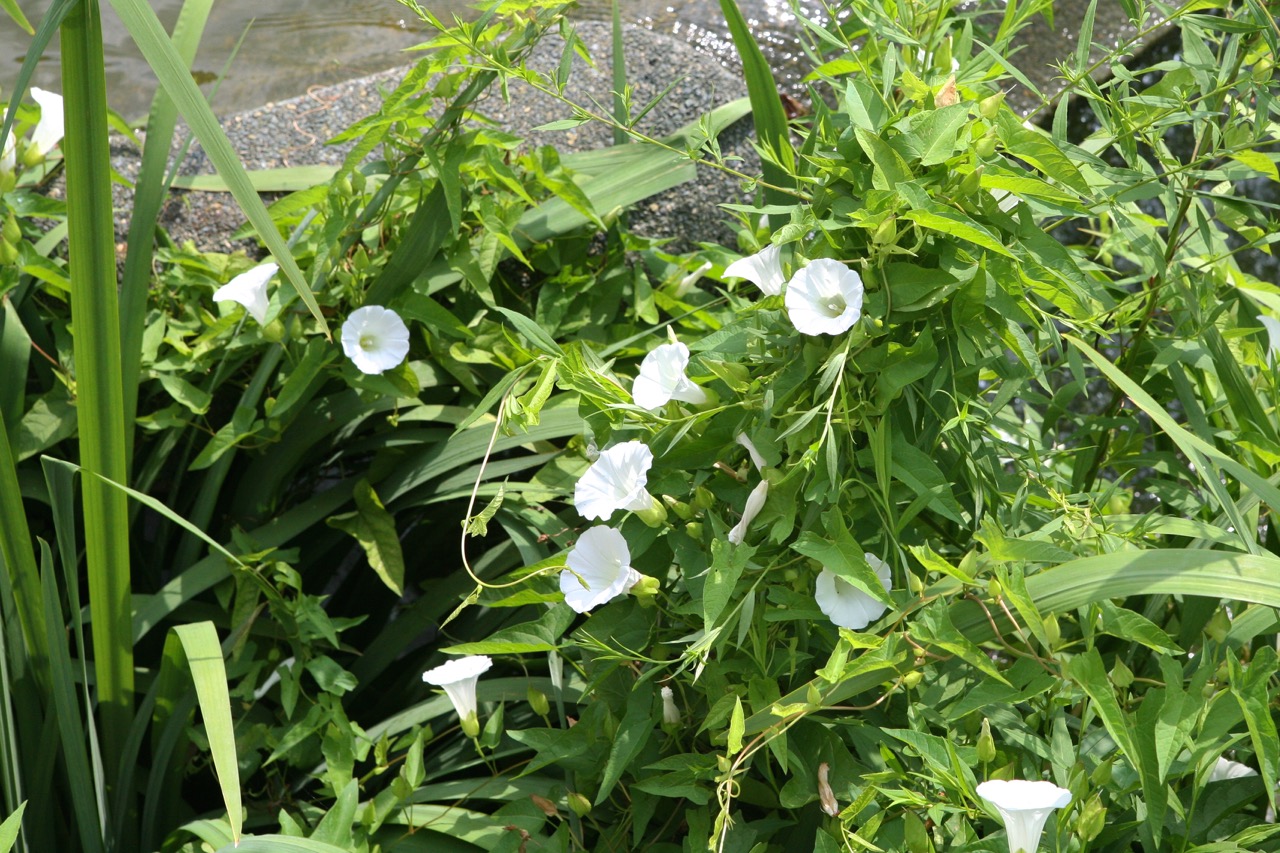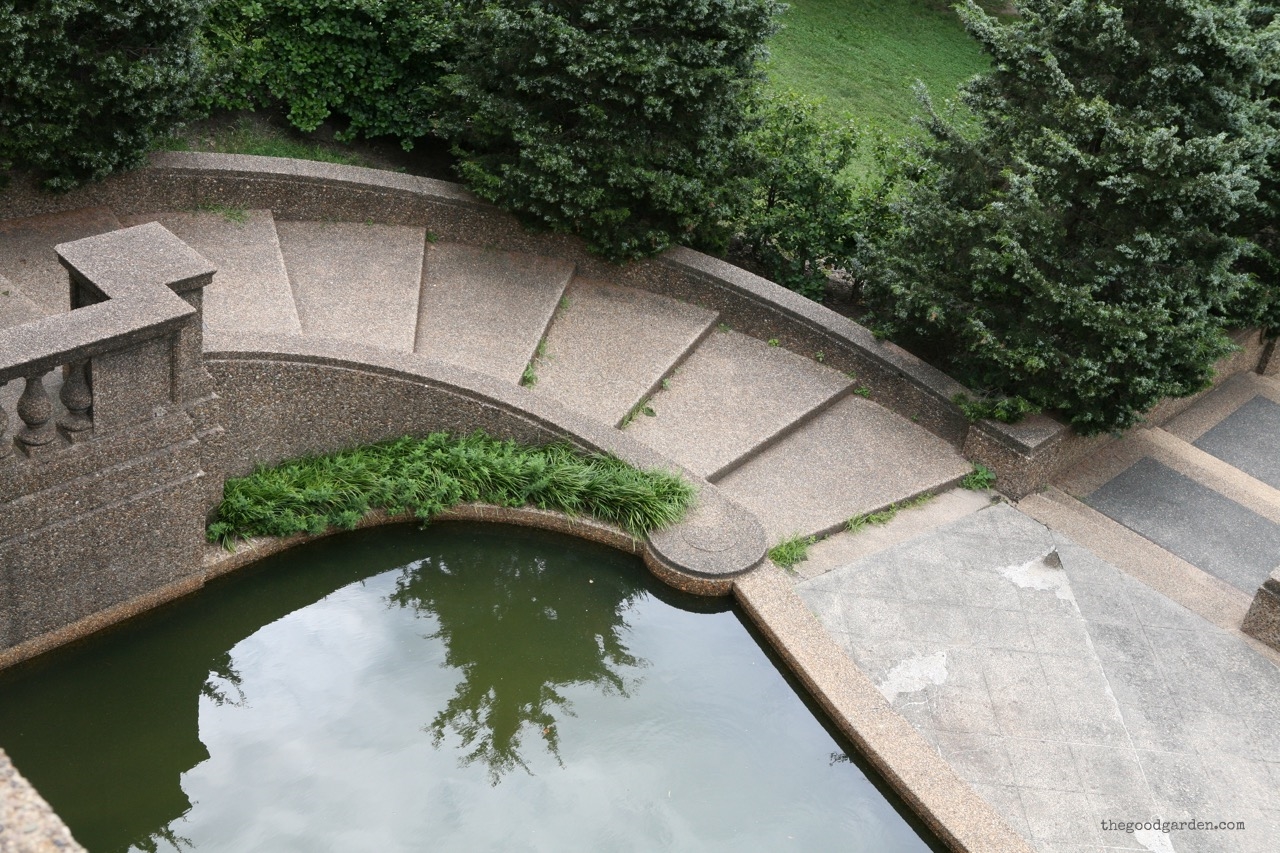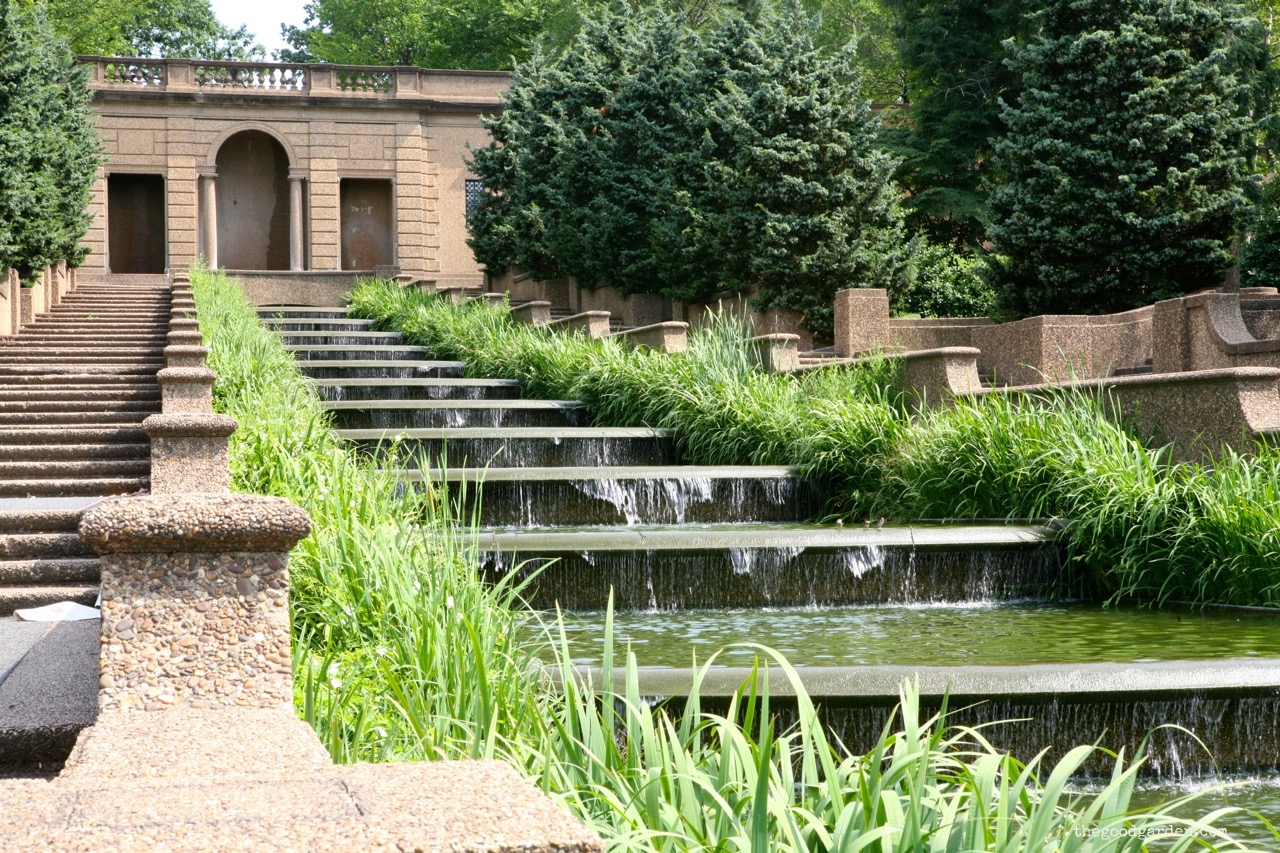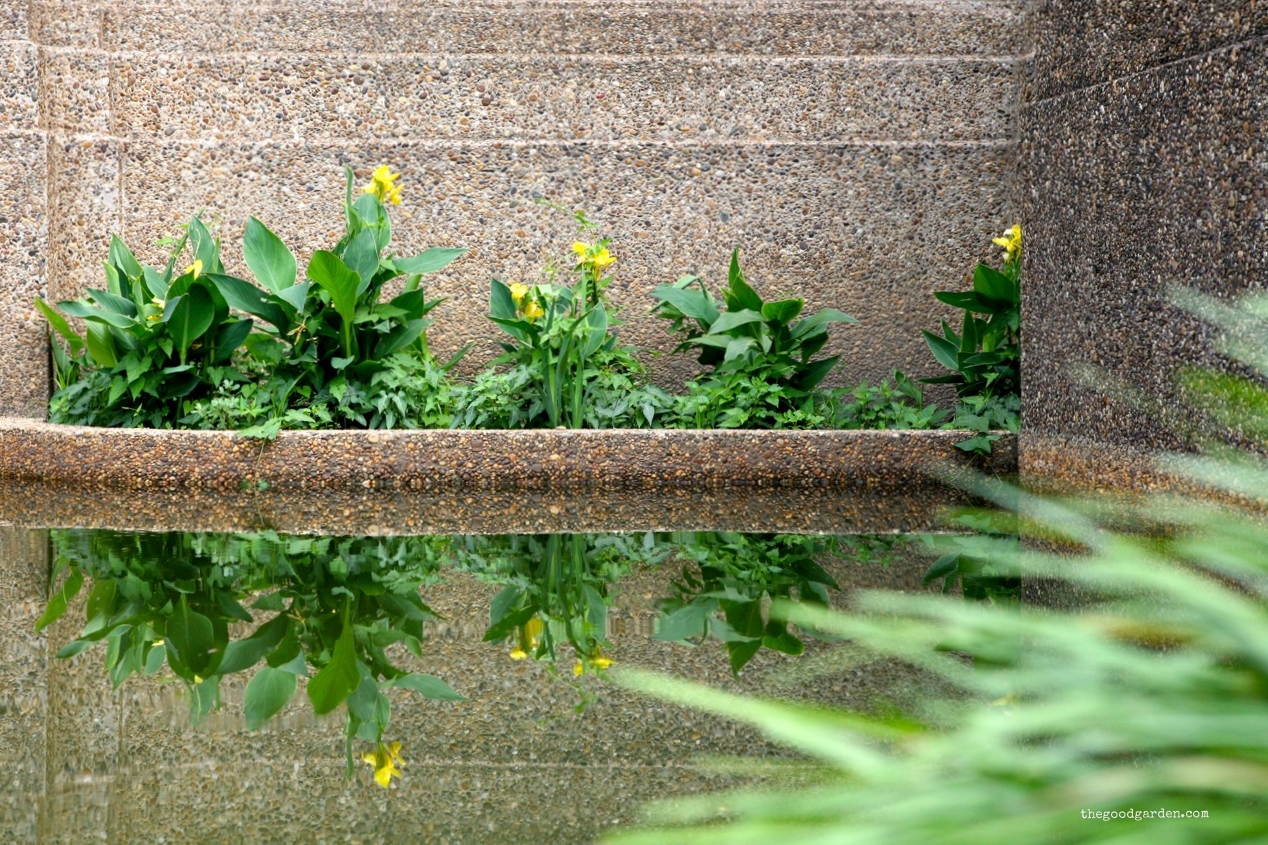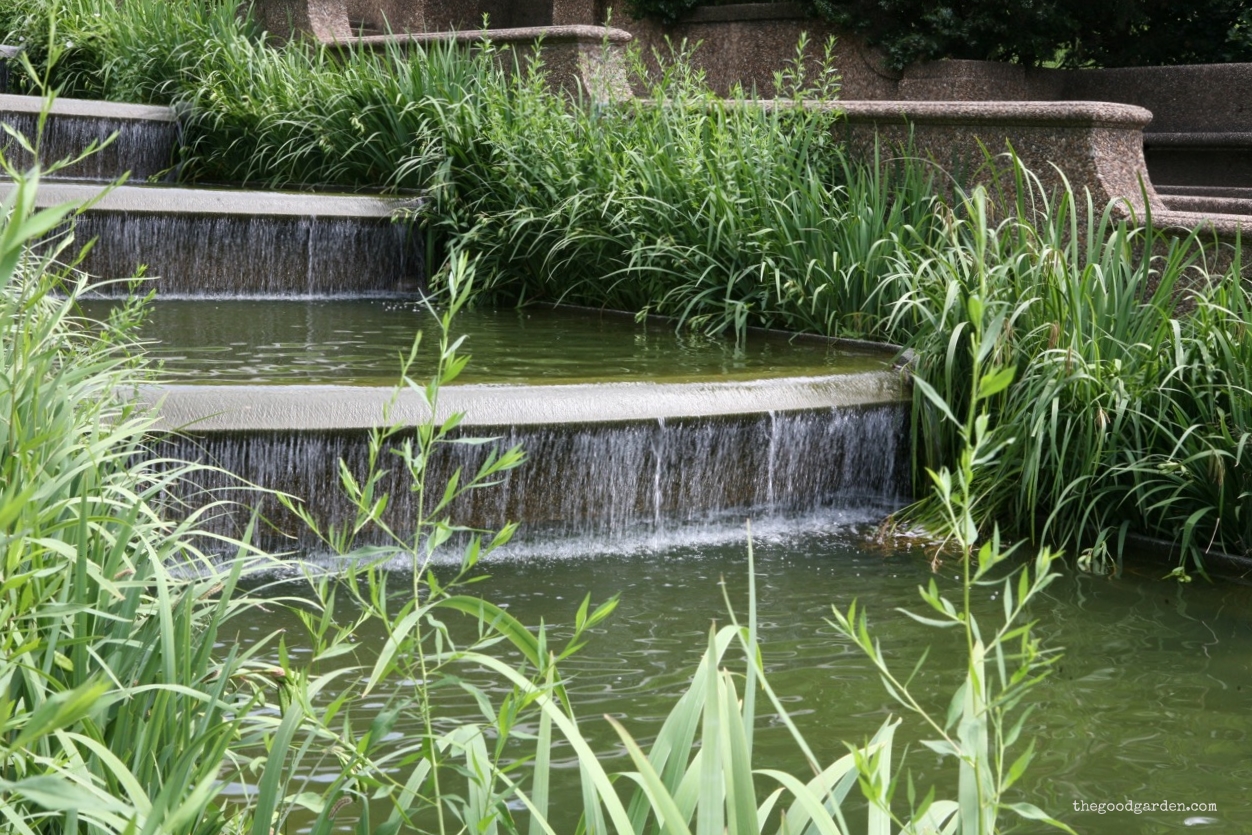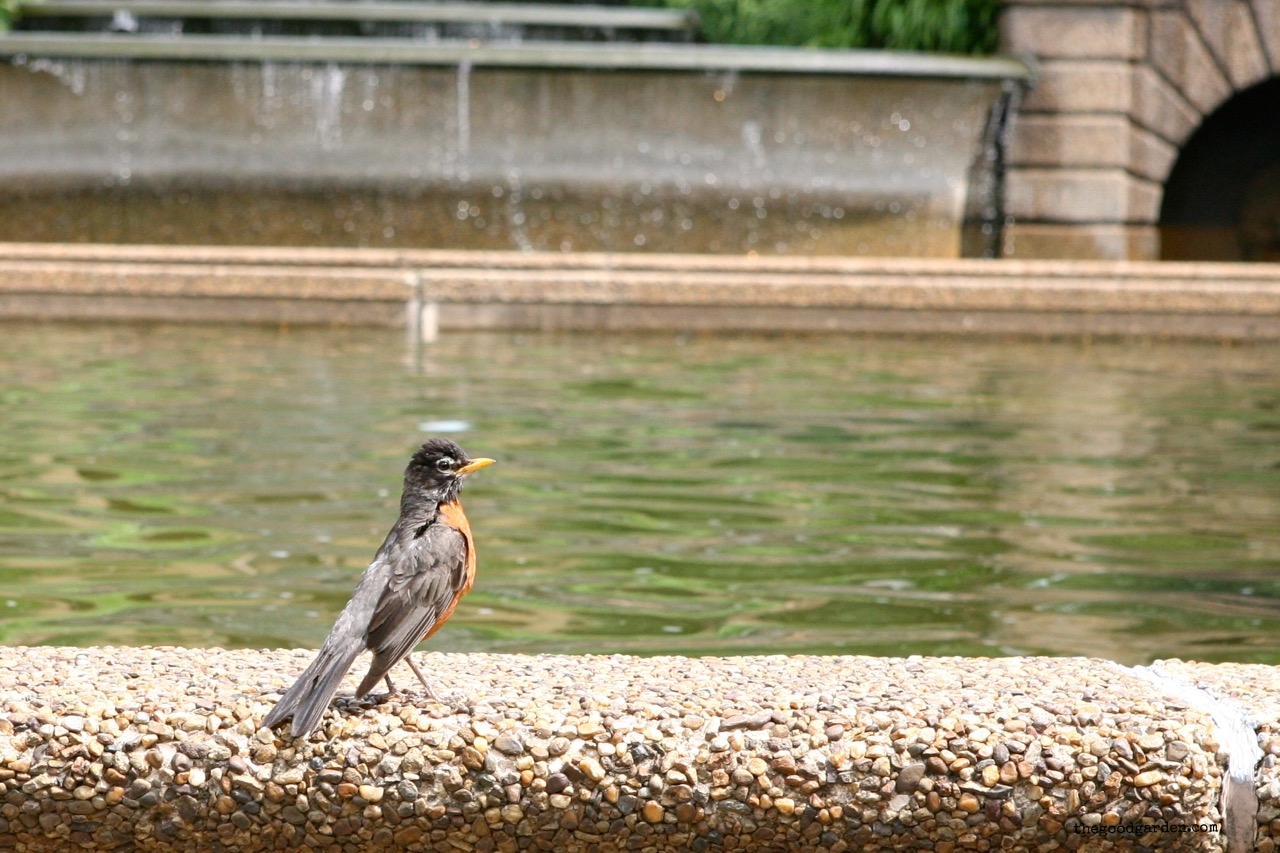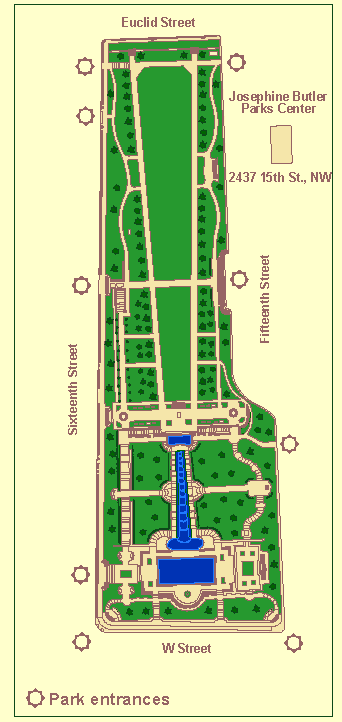I have to admit that annuals don’t play a big role in my garden. Sure; some of my containers have annuals, but I bring these inside for the winter so that they act more like perennials. Annuals are labor intensive, needing to be planted each year. Because they have to establish their root structures from scratch each season, they go through an awkward ‘teenage’ stage where they don’t seem to grow. I am afraid that I'd be constantly weeding to give them a fighting chance.
My recent visit to the Paine Art Center and Gardens in Oshkosh, Wisconsin reminded me that I might be missing out. The front border of this English manor house in Wisconsin is planted with a mixture of ornamental and edible annuals that create an explosion of color and interest: a big welcome that draws visitors in and stops you in your tracks.
The front border as seen in June.
Canna, verbena, celosia, and cosmos were planted here in June after the risk of morning frost had passed. Only a few weeks later, the amazing display seen here rewards patience. I particularly love the way kale is used to both soften and highlight the ornamental flowers. The color scheme is warm and harmonious, drifts of individual plants increase their impact, and repeating patterns create a soothing rhythm that carries your eye along the border.
Jessie Kimberly-Paine and Nathan Paine. Source: The Paine Art Center and Gardens.
The story of this garden begins with Jessie and Nathan Paine. Jessie Kimberly-Paine was the daughter of the founder of Kimberly-Clark, today the maker of Huggies and Kleenex products. Nathan Paine was president of the Paine Lumber company, the largest door and sash producer in the country at the time.
In 1925 the Paines decided to build a home inspired by their English heritage. To realize their dream they turned to architect Bryant Fleming who had studied horticulture, architecture, architectural history, and art. Fleming built their house in the Tudor style; the grounds were laid out to provide a woodland setting.
Unfortunately, the Paines never lived in the house. The Paine Lumber Company had a history of poor labor relations that would spoil their chance to realize their dream. In 1898 local woodworkers went on strike to protest the lack of follow-through on wage increases and the use of women and child labor. The strike lasted 14 weeks and turned violent with one death resulting. Nathan’s father had the union leaders tried for conspiracy and won the case; but worker resentment remained strong.
As the house neared completion in the 1930’s, the great depression was also in full swing. Workers were expected to share the burden as they had in previous economic downturns. Oshkosh was already a low wage manufacturing area, so additional cuts must have been particularly difficult. Meanwhile construction of the mansion continued on schedule. Disgruntled employees that had been laid off threatened to bomb the house if they ever moved in. The Paines decided to leave town.
After almost 15 years, the Paines returned to create the non-profit organization that became an art museum and garden open to the public in 1948. Jessie Kimberly-Paine continued to be involved until her death at the age of 100.
The museum has a wonderful permanent collection that displays pieces as they would appear in the residence, and the attached art gallery hosts wonderful traveling exhibits. Don’t miss the current Downton Abbey costume collection on display through September 20th. Most of all don't miss the every changing garden.












